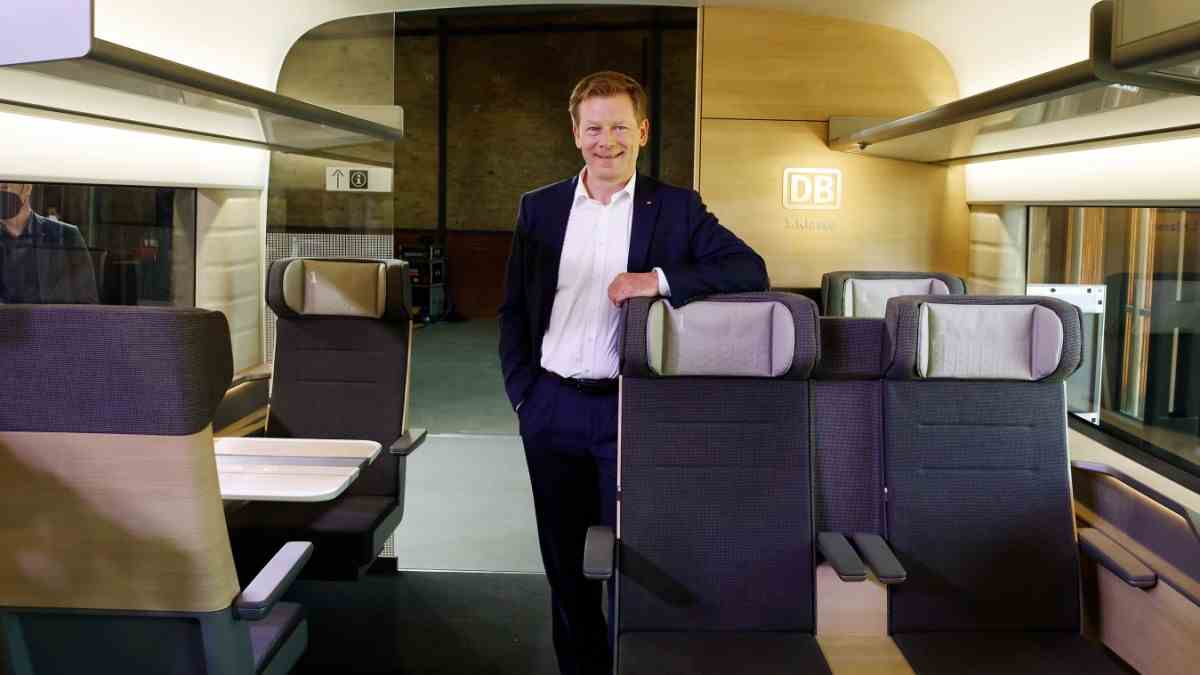The project was almost secret in the state-owned company. A room in the glass railway headquarters at Potsdamer Platz became a “showroom”. A selection of possible wall colors and wood grains or fabric patterns for seat covers were on display here. The board members of Deutsche Bahn were able to take a look at the future of their flagship and have a say in the decision-making process. After more than two years of development, Deutsche Bahn boss Richard Lutz presented the result in Berlin on Wednesday: the completely renewed design of first and second class and the on-board bistros.
White paintwork, red stripes, black window strip: from the outside, everything stays the same on the new ICE. Inside, however, some things have changed from the latest model, the ICE 3 Neo. New seats should make traveling more comfortable, and small details like an Ipad holder should make the seats more practical. In 2nd class, the seat pattern now gets a gray-blue pattern after the blue one. Shades of gray predominate in first class, intended to evoke the coloring of train station lounges. On the walls: the imitation of German oak. Warmer light is supposed to bring a little more living room atmosphere into the open-plan car, felt elements on the ceiling and walls improve the acoustics and muffle noise from neighbors.
The visual change is most evident in the restaurants on the trains. Because the colors change more strongly here, and the space available also changes. The bright red should give way to a warmer wine red. And the functional tables are to be replaced by seating areas and bar elements with bar stools.
Most of the previous ICE design dates back to the 1990s
However, it will be a while before the design begins its journey. Passengers will first encounter the new equipment in late 2023, when the new trains are first deployed. The previous design of most ICE dates largely from the 1990s. When the new ICE4 was introduced in 2017, there was great criticism of the seats. The train finally exchanged them. To ensure that this does not happen again, 900 passengers tested the seats of the new design in advance. It is intended for new trains only, existing vehicles will not be upgraded. There will also be children’s and family compartments as well as bicycle parking facilities in the new trains.
Michael Peterson (left), CEO of DB Fernverkehr AG, and Richard Lutz stand in the model of an on-board bistro that will in future have seating areas and bar elements with bar stools.
(Photo: Carsten Koall/dpa)
With the new and already ordered ICEs, the Group’s train fleet is expected to grow from the current 360 to 450 ICEs by 2030. The railway assumes that it will be able to cope with the increasing number of passengers. However, Lutz called for a rapid expansion of the infrastructure. The scarce network capacities are and will remain the bottleneck for the growth of the railway for the time being. The congested network is also the main reason for the massive punctuality and quality problems on the railways.
The new ICE look is not an easy project for designers. Unlike car manufacturers, for example, planners could not think in cycles of five to six years. The design of the new ICEs is intended for entire decades and must meet the taste of a whole generation of passengers, said long-distance transport boss Michael Petersen. Deutsche Bahn has calculated how much time all passengers together will spend in the almost 60 first new ICEs in the next 15 years alone: the group’s statisticians came up with a billion hours.

